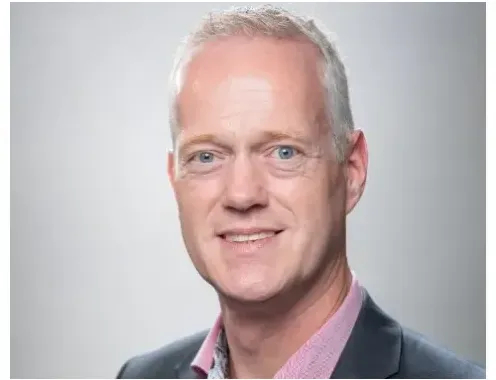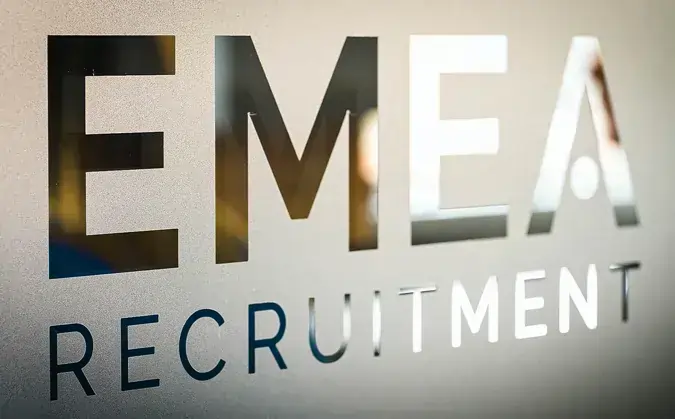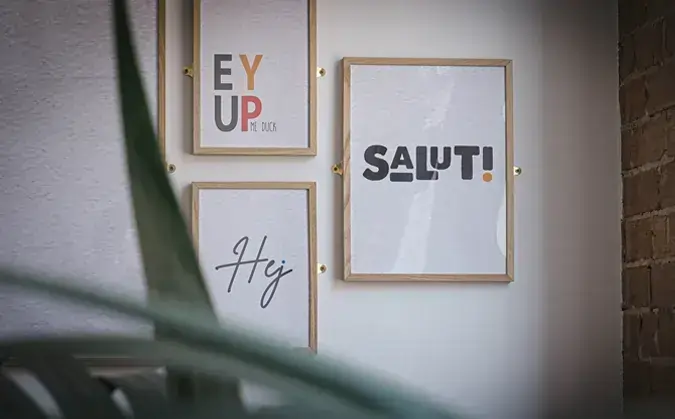Ramón Tolk - Senior Director of Treasury at Avery Dennison


Ramón Tolk is the Senior Director of Treasury at Avery Dennison. He has a strong track record of leadership and treasury transformation achievements gained in multiple industries. Ramón began his career at Deloitte where he remained for more than 15 years before transitioning to interim contracting across the Netherlands.
You began your career in a ‘Big Four’ audit firm. How was that and what lessons and experiences from Deloitte do you apply today in corporate treasury?
My career in auditing began while I was completing my Master's and the chartered accountant's qualification simultaneously. I enjoyed combining study with work experience as I was able to put learning into immediate practice, and vice-versa.
As an Auditor, I specialised in housing associations: capital-intensive real estate with a large loan portfolio. It was through frequent discussions on how to manage the financing and the related interest rate risk that my interest in Treasury was sparked.
Soon after I’d graduated as a Chartered Accountant, Deloitte acquired a boutique treasury consulting firm, and I joined their team. Around this time new IFRS accounting standards came into effect for Netherlands-listed corporates, and Sarbanes-Oxley for US-listed ones. Among my treasury consultant colleagues, I was the only one with an audit background so I was well-placed to dive both worlds and became involved in valuations of derivatives and related hedge accounting, as well as setting up and testing internal control frameworks for the Treasury Department.
My experience allows me to collaborate with stakeholders across the company and understand their different perspectives, whether banks, controlling or accounting professionals or legal departments. I've always felt the importance of understanding how certain initiatives on one side may impact the other.
If you structure a specific intercompany financing or cash pool structure, it may work well from a Treasury perspective, but there may be tax consequences that you’ve overlooked. It's important to connect the dots and collaborate within functions.
What is the most rewarding part of your current role at Avery Dennison, and can you provide a short introduction to the company?
Avery Dennison is a global material science and digital ID solutions company, providing retail branding and information labelling solutions, including pressure-sensitive materials, radio frequency identification, inlays and tags, and a variety of other solutions. We are a US-listed Fortune 500 company with an annual turnover of US$8.4 billion, present in more than 50 countries.
I've been the Senior Director of Treasury for seven years now and the most rewarding part of that journey has been the business transformation within Treasury.
When I joined Avery Dennison, many aspects of Treasury required improvement, including expanding our European cash pool structure to one that includes every country that’s unrestricted by central bank regulations. Other transformative initiatives included optimising bank fees incurred for cash management through the global RFP process.
My team has also centralised our FX processing, expanding from FX trading to a larger group of banks implementing hedging based on Value-at-Risk. With this approach, we select FX hedge portfolios that would achieve maximum risk reduction for a certain cost of hedging (efficient frontier curve). By applying Value-at-Risk, the team can save on the cost of hedging within acceptable risk parameters. Furthermore, we worked on the enhancement of working capital initiatives like receivable financing solutions and amending our Supply Chain finance program to be sustainable and to move the company towards its goals.
We also set up a quantification method for our bank relationships so that we can view the share of wallet and what each bank earns on the overall business we do with them, whether it's bank accounts and cash management, FX, funding and all other activities. This information allows you to better distribute the business among banks, maintaining a positive relationship with each. This is important as it increases their willingness to extend or renew the current commitment.
Before I joined the company, cash was centralised through intercompany loans, resulting in a high intercompany loan balance and that created two major risks. Firstly, many loans were in a currency that wasn’t the functional currency of the lender or the borrower, or both! In those situations there was FX hedging required to manage the currency revaluation, incurring further costs. Secondly, a higher loan balance results in higher interest income and expense, and tax authorities are scrutinising more and more often the interest rate conditions on your intercompany loans. If they challenge the interest rate on a loan - and the loan balance is larger - there is a heightened risk of tax corrections and penalties. To address that, we put in place standardised processes, to reduce the loan balances through periodic dividend distributions.
We also implemented an intercompany loan pricing methodology that is OECD and BEPS compliant. It analyses the transfer pricing element of your intercompany loan pricing and ensures that is at arm's length.
Finally, we implemented a new treasury management system and set frameworks for commodity risk, interest rate risk, and counterparty credit risk management. We’ve also been standardising and sanitising our control framework.
This represented a complete overhaul of our Treasury function, which can only be done with your team’s support. It’s essential to bring your team along on the journey, share and embrace a vision and not be afraid of change. A team should always challenge the status quo by asking what could be improved.
Over the past three years, you've presented frequently at conferences, seminars and universities as a guest lecturer. What's the motivation behind that?
I have 30+ years of experience and have completed many interesting projects, so I have extensive knowledge and stories that I can share with others who may have limited exposure, shedding light on activities across Treasury community for them. Even for a gathering of seasoned treasury professionals, the cutting-edge nature of some projects we’ve completed is interesting for them to hear too, based on the feedback I often receive.
Alternatively, when I provide guest lectures at universities, it's just great fun to do. The students are usually at an early stage of their careers, and I enjoy making them enthusiastic about Treasury by sharing the vast experience I can bring to the table.
For the same reason, we provide internship opportunities within my team, allowing students to gain a half-year’s experience to kick-start their career. That’s also good for us as they provide fresh perspectives and they introduce themes from their very recent education into the company.
Another benefit is that when we have a vacancy within a team, we can hire one of the students who have completed an internship; I think in the last seven years, we have had four interns join the Treasury team permanently. It’s great because you can hire someone at the junior level, filling the gaps from underneath and allowing the rest of the team to make structured career progress and grow into more senior positions.
Of course, we can't offer a permanent position to every intern, but those who haven’t joined us have landed a very good junior position somewhere else.
For many corporations, DE&I is an important topic. Do you consider such policies when creating a team?
Yes, definitely. As a company, we have policies on this topic including our 2030 sustainability goals, which include a target on the ranking on the inclusion index as well as a target for the percentage of management positions held by women.
I strongly believe that diverse teams perform better than non-diverse teams. When I joined the company, I was lucky to inherit a team that was already very diverse by nationality; everyone in the team was born in a different country in Europe or Asia.
Gender-wise diversity was lacking as most of the team was male, but through the natural process of attrition, hiring and placing interns, we were gradually able to create a more positive balance.
First, of course, you must look at the quality of which you hire. But if people have the same qualities, then, you can let diversity be an element in your decision making.
Here, in the European headquarters of a large multinational corporation in the Netherlands, I think over 50% of the employees are non-Dutch and we have about 40 different nationalities. So, it's important to be mindful of cultural differences; to value and learn from the perspectives that everyone brings into the discussion; I see that daily in my work.
Additionally, as a Dutchman, I know that we can seem very blunt and outspoken in opinions. Sometimes that might be good as you get clarity on what you want, but it's important to realise that sometimes more tactful communication is better. Working in the international environment teaches you these aspects.
When we have an open internship opportunity, over 90% of the applications come from international students who are based in the Netherlands. Surprisingly, Dutch students don't look forward to an internship, or maybe they are just applying for internships with better-known corporates in the Netherlands. Avery Dennison branding doesn’t always feature on our products themselves, so it may be that we’re less of a household name for domestic applicants.
How do you unwind outside of my work?
I mostly spend my free time with my wife and two kids. We enjoy being out in nature and live near the Dutch coast, so we can easily hike to the dunes or go to the beach, which I love.
We enjoy sports and where possible try to combine that with being outside. My daughter began speedskating a few years ago so we often visit the ice-skating rink in Harlem.
During the COVID years, when I brought her to the rink, the staff were asking parents to help train the kids. So, for the last few years, I’ve been a trainer for those who just started learning how to skate. With a few simple exercises, you can see them make their first moves and they progress and improve their technique in a short amount of time, which is amazing to see. That's very rewarding for me and allows me to give something back to the community voluntarily.
During the summertime my daughter inline skates, so I’ve started training kids on the inline skate track too, helping them to progress and have fun. Of course, fun is the most important part, as kids these days are often found sitting on the couch, not playing outside as often as we did as kids a long time ago - at least as I did!
We work closely with an international medical charity, Operation Smile, who provide surgery to children with cleft lip and palate. Their goal is to create new smiles, so what was the last thing that made you smile?
My 13-year-old daughter. She plays the guitar and last week there was an open stage at her school, so everyone in school was invited to perform. She said she wanted to play a song and she was the only first-year student in school that performed. She did very well, and I was very proud of her; it definitely put a smile on my face!
Thank you to Ramón for speaking to Thomas Powell, Recruitment Consultant in our Finance & Accounting recruitment team in the Netherlands.
Views and opinions contained within our Executive Interviews are those of the interviewee and not views shared by EMEA Recruitment.






You can also use your social account to sign in. First you need to:
Accept Terms & Conditions And Privacy Policy